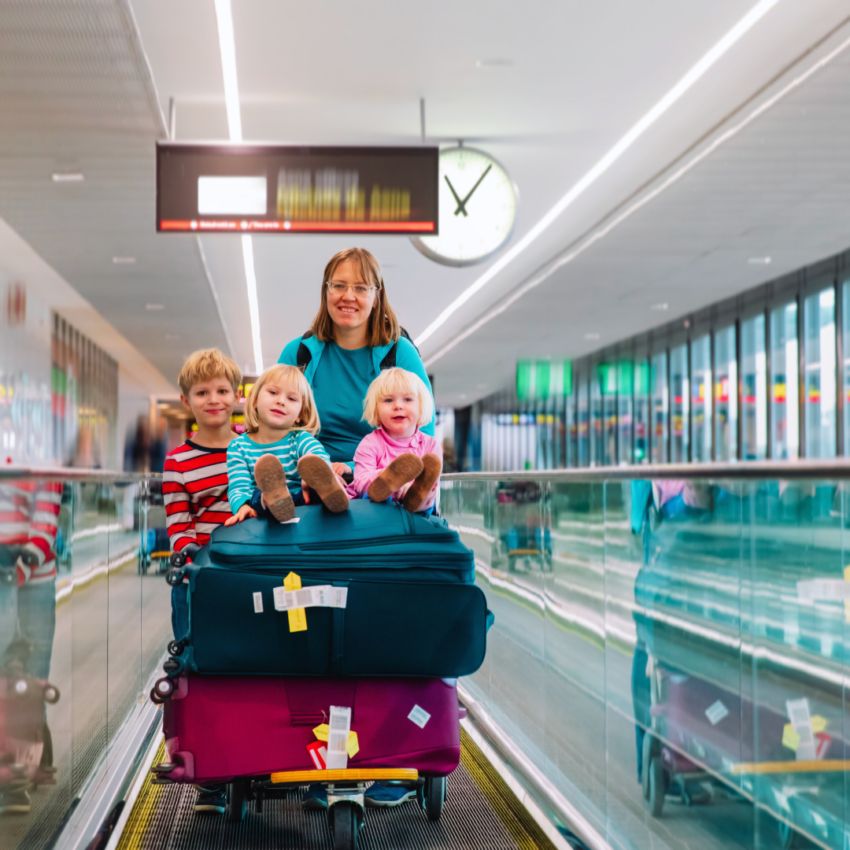How to Keep Kids Safe While Traveling Abroad: Essential Tips for Families

Traveling abroad can be an exciting adventure for families, but it also comes with challenges, particularly when it comes to ensuring children’s safety. Creating a travel plan that includes safety measures, preparation for emergencies, and teaching children about their surroundings is essential for a stress-free experience. Parents can take proactive steps to protect their children while exploring new cultures and destinations.
Destination awareness plays a critical role in planning. Researching the safety of the travel location, understanding local customs, and identifying nearby medical facilities can help parents make informed decisions. Alongside this, equipping children with necessary information, such as emergency contact numbers and protocols, enhances their sense of security as they navigate unfamiliar environments.
In addition to planning, establishing communication guidelines and routines can help children feel more secure. Encouraging them to stay close and to recognize safe spaces fosters independence while maintaining safety. By prioritizing these strategies, families can enjoy the wonders of traveling abroad with greater peace of mind.
Planning Your Trip
Planning a trip abroad with children requires careful consideration of various factors. It involves selecting appropriate destinations, ensuring necessary documentation, and securing accommodations that prioritize safety and comfort.
Choosing Child-Friendly Destinations
When selecting a destination, prioritize places known for being family-oriented. Research amenities such as childcare services, playgrounds, and family-friendly attractions.
Consider destinations that offer a range of activities catering to different age groups. Destinations with accessible healthcare facilities and a low crime rate are preferable.
Additionally, travel reviews from families can provide insights into the suitability of a location. Always check local customs and child-related laws, as this can impact the experience significantly.
Securing Necessary Documents and Vaccinations
Before traveling, ensure all required documents are in order. Passports should be valid for at least six months beyond the return date.
Check visa requirements for the children, as these may differ from adults.
Consult a healthcare professional about necessary vaccinations, as specific countries may require them. Keep copies of all documents, including medical information and emergency contacts, accessible during the trip.
Consider travel insurance that covers medical emergencies and trip cancellations for added peace of mind.
Booking Safe Accommodations
Selecting safe accommodations is crucial for a worry-free experience. Research hotels or rentals that boast positive reviews regarding child safety.
Look for amenities such as cribs, kitchen facilities, and laundry services, which can make traveling with kids easier.
Prioritize locations that allow easy access to emergency services and public transport.
Examine room layouts; adjoining rooms can provide more space and parental oversight. Use reputable booking platforms that verify properties to enhance security.
Packing Essentials
When traveling abroad with children, careful packing can enhance safety and comfort. Focus on essential items such as a travel first-aid kit, appropriate gear, and entertainment to keep kids engaged during the journey.
Preparing a Travel First-Aid Kit
A well-equipped travel first-aid kit is crucial for addressing common issues. Include the following essentials:
- Adhesive bandages in various sizes
- Antiseptic wipes or spray
- Gauze pads and adhesive tape
- Pain relievers like acetaminophen or ibuprofen
- Children’s allergy medication, if needed
- Thermometer for checking fevers
- Insect repellent and sunscreen
Consider adding specific medications for any known allergies or conditions your child may have. Regularly check the kit for expiration dates and ensure that everything is easily accessible.
Choosing the Right Travel Gear
Selecting appropriate travel gear contributes significantly to safety and convenience. Look for lightweight, durable luggage that is easy for children to carry. Consider these options:
- Backpacks with safety features like reflective materials
- Child-sized travel pillows for comfort during flights or long drives
- Lockable suitcase to deter theft
- Water bottles that are spill-proof and easy to use
Clothing should be versatile and suitable for various climates. Pack layers to adapt to changing weather conditions. Familiar items, like a favorite blanket, can help kids feel secure during travel.
Entertainment and Comfort Items
Keeping children entertained during travel can reduce anxiety and restlessness. Prepare a mix of activities for different modes of transportation:
- Books and coloring materials to spark imagination
- Travel-friendly games or puzzles that are easy to carry
- Headphones for movies or music on devices
Include comfort items such as a favorite toy or stuffed animal. Snacks that are easy to pack, like granola bars or fruit, can also keep kids content. Plan for breaks and ensure children stay hydrated throughout the journey.
Safety During Transit
Maintaining children’s safety during transit is essential while traveling abroad. Whether in the air, on the road, or using public transportation, specific measures can enhance security and ensure a smooth journey.
Air Travel Guidelines
Before boarding, parents should check their airline’s policies regarding children’s safety. Safety seats are often essential for infants and toddlers. It is advisable to book a direct flight when possible to minimize layovers and the chaos of changing planes.
At the airport, keeping children within arm’s reach is vital. Use child harnesses or wrist links in crowded areas. Teach children to identify trusted adults, such as airport staff in uniforms. Ensure families have identification tags on their belongings for easy retrieval.
During the flight, encourage children to stay seated with their seatbelts fastened. Bring distractions like books or games to minimize restlessness. Discuss what to do in case of an emergency, emphasizing calmness and listening to the flight crew.
Road Trip Strategies
Planning is crucial for road trips. Before starting, parents should ensure that all passengers wear seat belts at all times. Use appropriate car seats according to age and height guidelines.
Frequent breaks can help prevent fatigue. Plan stops at safe, family-friendly locations. Encourage children to stretch their legs and use the restrooms. Keep emergency contacts handy and familiarize yourself with local laws regarding child safety in vehicles.
During the drive, keep a first-aid kit accessible. Discuss basic road safety rules with older children, such as not distracting the driver. Ensure that snacks and drinks are easily reachable and do not require an adult to take their hands off the wheel.
Navigating Public Transportation Safely
Using public transportation can be safe with proper precautions. Before departure, research the local transit system and its safety measures. Familiarize the family with routes, stations, and stops.
At stations, remain vigilant. Keep children close and avoid crowded areas if possible. In transit, make sure children understand the importance of staying seated and holding onto poles or seats for stability.
Teach children to recognize their stop. Consider using mobile tracking apps for older kids to stay connected. Always plan routes in advance. This minimizes confusion and allows parents to watch over their children effectively.
Engaging in Activities Abroad
Traveling with children opens up a plethora of activities that can enrich their experience and expose them to new cultures. Ensuring safety while engaging in these activities is crucial for a rewarding journey.
Participating in Outdoor and Recreational Activities
Outdoor activities can provide children with a unique way to explore their surroundings. Families should prioritize safety by selecting age-appropriate activities. For instance, hiking or biking can be enjoyable, but one must assess trail difficulty and safety regulations.
Travel Tips for Outdoor Engagement:
- Choose supervised activities: Look for guided tours that ensure safety.
- Wear appropriate gear: Use helmets, life jackets, and suitable footwear.
- Stay hydrated: Always carry water bottles, especially in warm climates.
Encouraging children to stay within sight and setting boundaries can enhance safety. Parents should also familiarize themselves with local wildlife and environmental hazards.
Cultural Sensitivity and Awareness
Engaging in local cultural experiences can be enriching, but awareness is essential. Children should learn about local customs and traditions. This understanding fosters respect and minimizes cultural misunderstandings.
Key Points for Cultural Engagement:
- Learn basic phrases: Teaching children a few words in the local language can build rapport.
- Follow local norms: Dress appropriately and act respectfully in religious or cultural sites.
- Involve local guides: Use local experts to navigate cultural sites actively.
Encouraging interest and curiosity in different cultures helps children appreciate diversity. This not only enhances their travel experience but also promotes respectful behavior abroad.




Leave a Reply